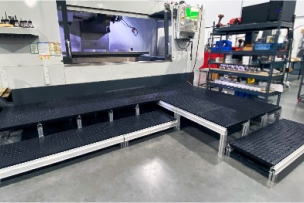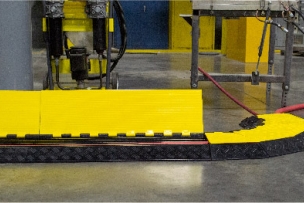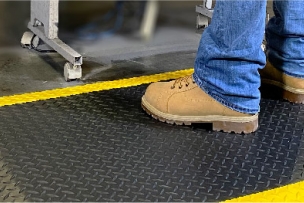The standing worker. You know who they are. They are in factories, healthcare, and other service environments. Eight hours a day they stand, typically on a hard surface such as concrete or tile. They then go home to ice, pain relievers and eventually just learn to survive with the aches and pains.
Anyone who stands all day at work knows how tiring that can be. Standing causes muscles to constrict, which leads to reduced blood flow. This makes muscles and joints hurt, and it causes blood to stagnate, which can cause varicose veins. In addition, long-term standing causes pronation, or extensive flattening of the foot. While this can be simply tiring and a bit painful, it can also lead to plantar fasciitis and other serious conditions.
Plantar fasciitis or heel spur syndrome is the heel bone's reaction to repeated stress or weight bearing. Constant stress and pressure cause the ligament on the bottom of the foot, known as the plantar fascia, to become inflamed. The plantar fascia forms the foot's arch by working like a rubber band between the heel and ball of the foot. Plantar fasciitis happens more often in older people because their plantar fascia have become more like ropes than rubber bands, and the shock-absorbing pads of fat in the heels have worn down over time. People who are overweight also are at higher risk because their body weight puts additional stress on their feet.
Often, because of tension in the ligament, a bony spur will develop in the heel of the foot. The spur, however, is not the source of pain. The inflammation of the ligament causes the searing pain along the bottom of the foot, which some have compared with being pierced by a pin or knife. The pain is often most noticeable first thing in the morning, and its sharpness usually becomes a dull ache after standing or walking for a while.
Besides the obvious loss of work with the more serious conditions, there is a domino effect that goes unnoticed, way before a serious condition. As a worker stands on a hard surface over a period of time, the reduced blood flow and initial pains set in, and there is a loss of productivity and focus caused by fatigue, which can lead to reduced production, mistakes and lowering morale, which eventually leads to a lack of concern for quality, and as a result an increase in production costs, which are outside of any medical cost or lost days.








Talk to Us!
Leave a reply
Your email address will not be published. Required fields are marked *